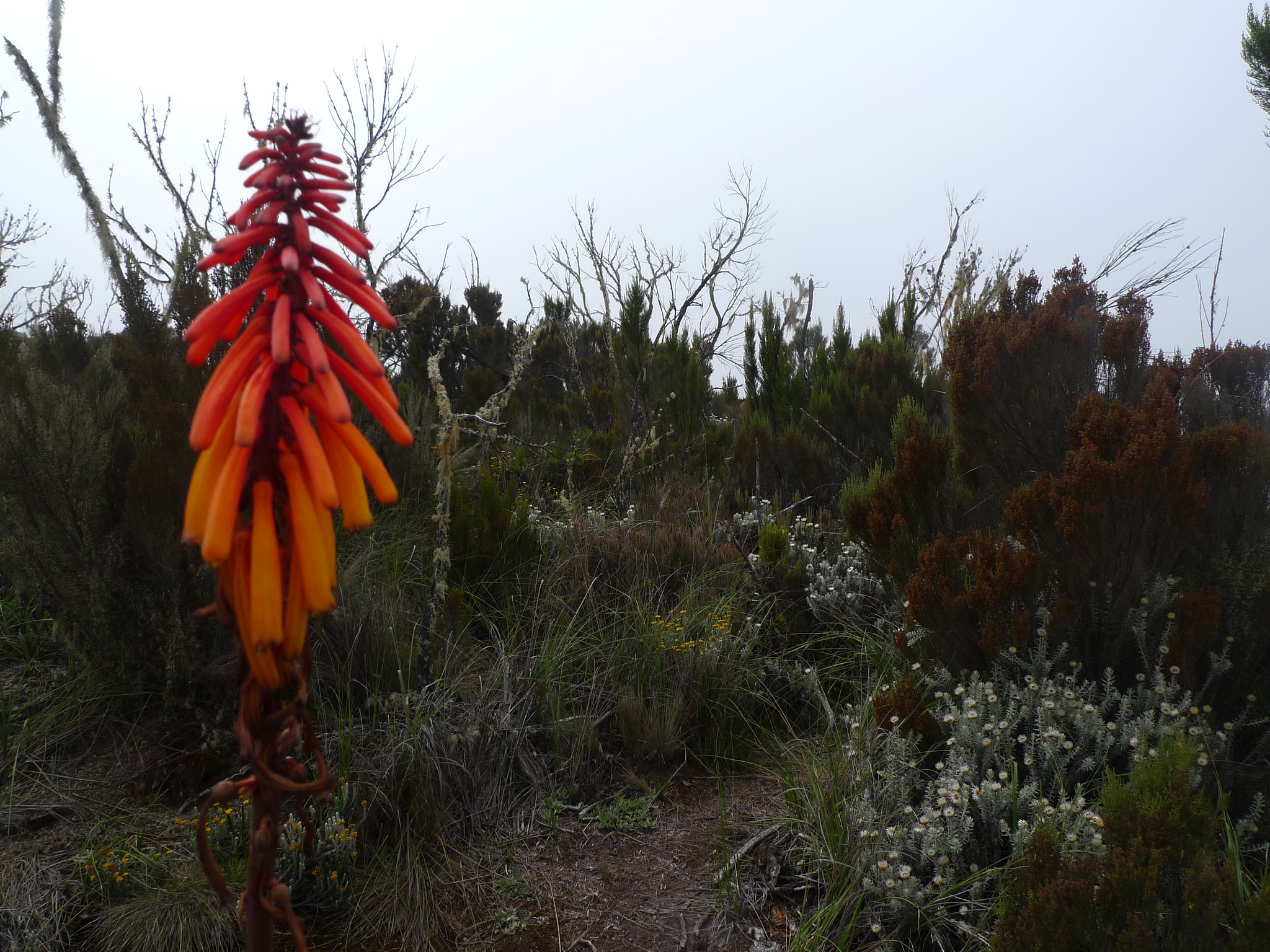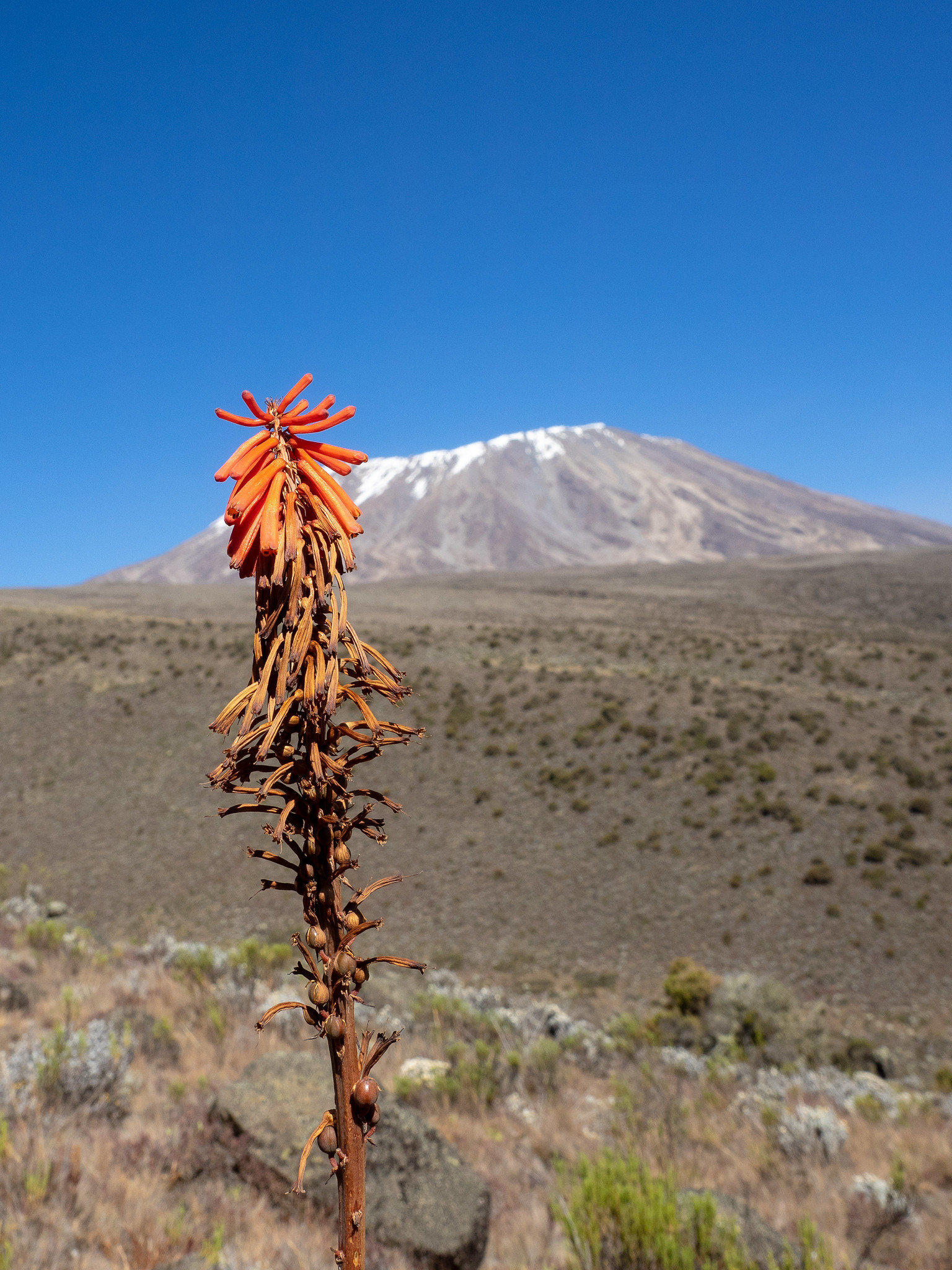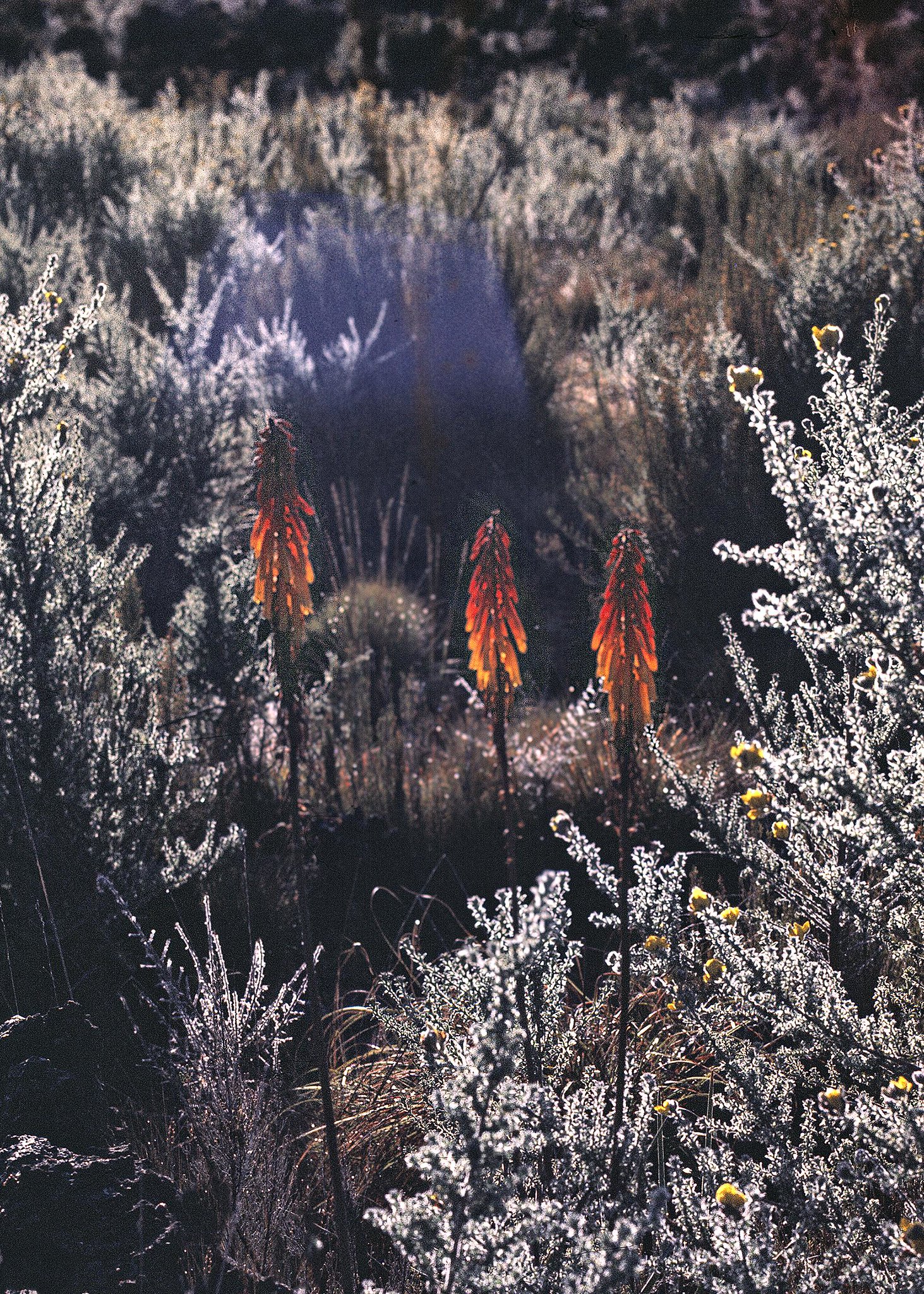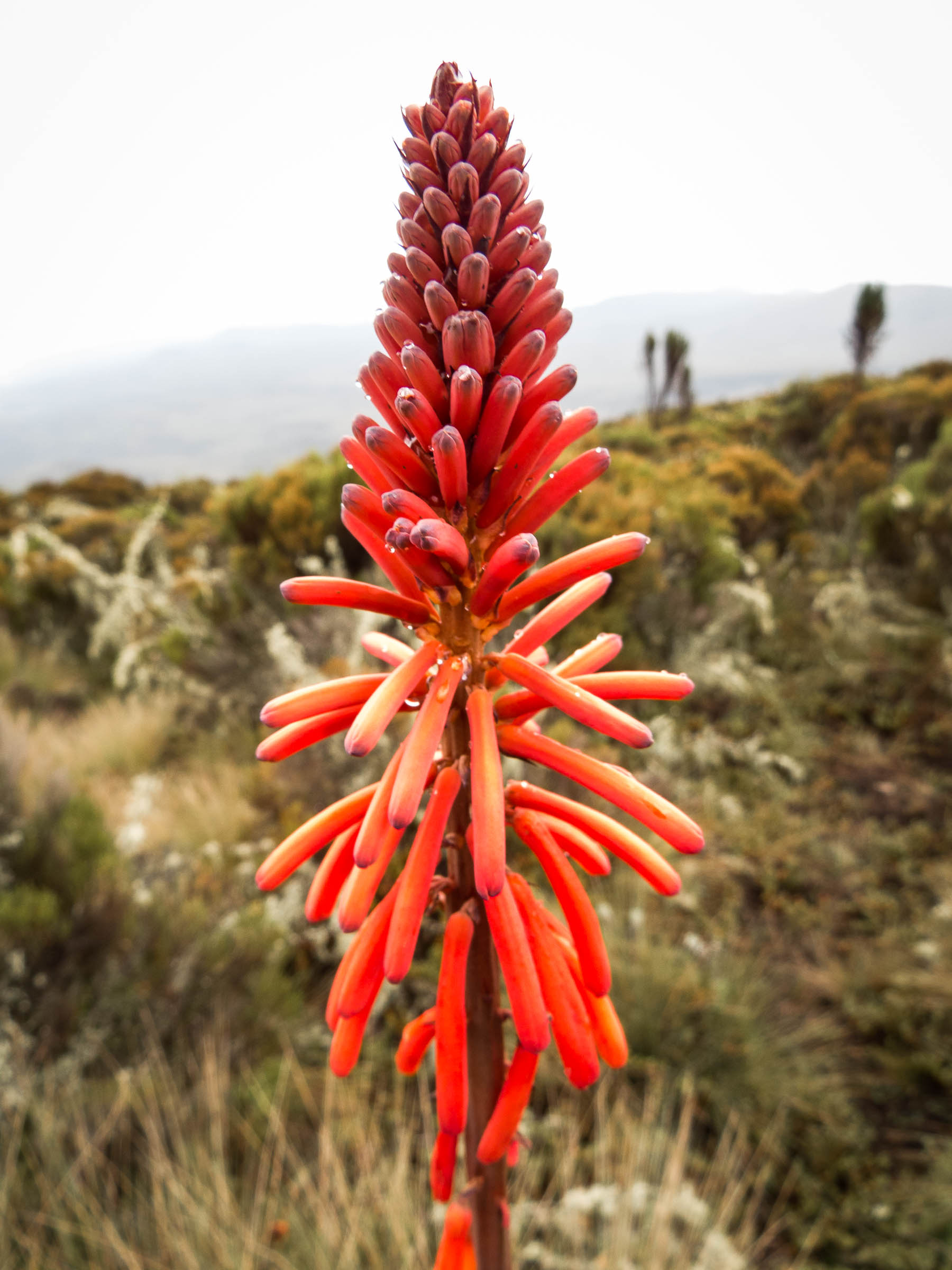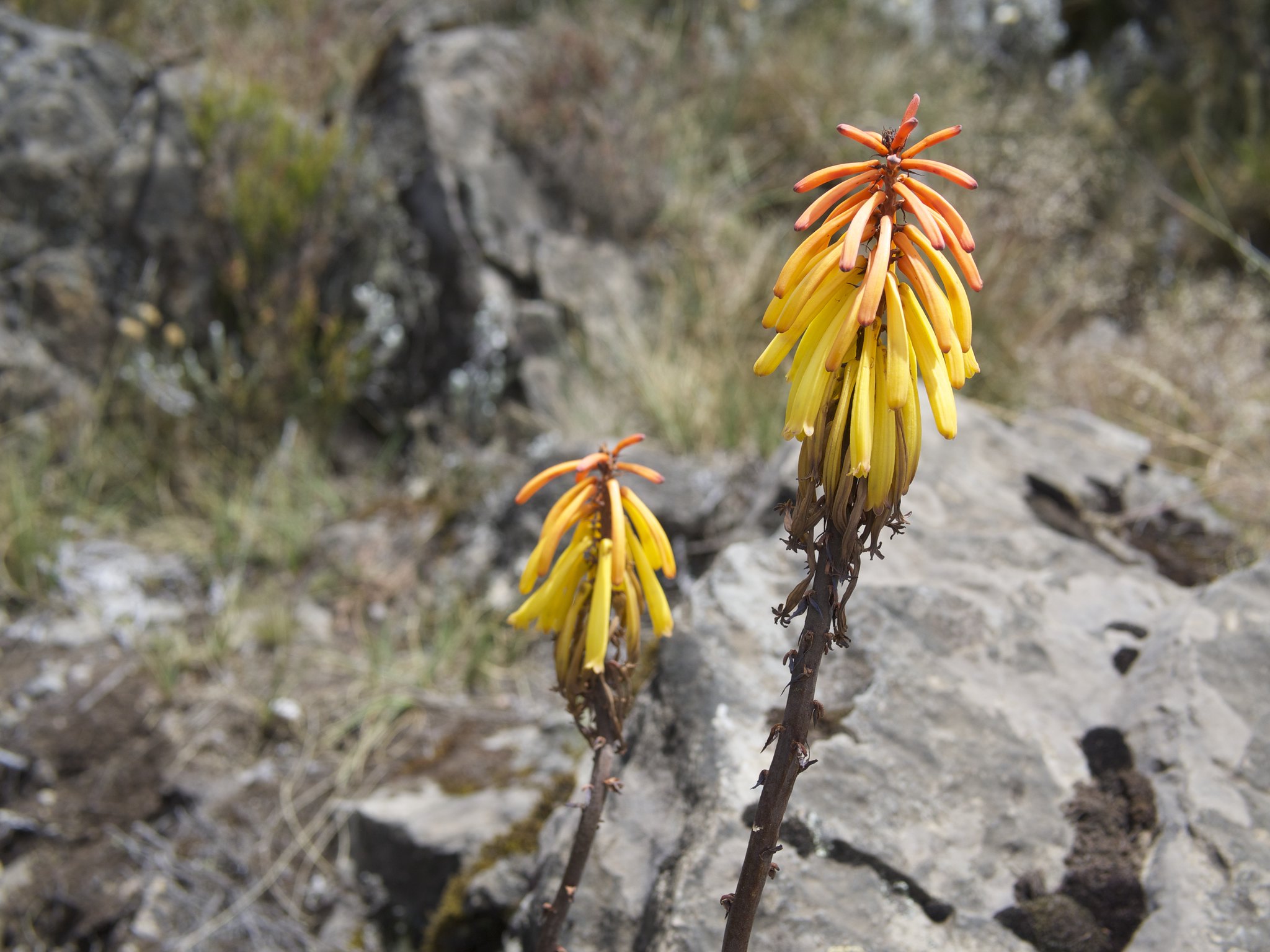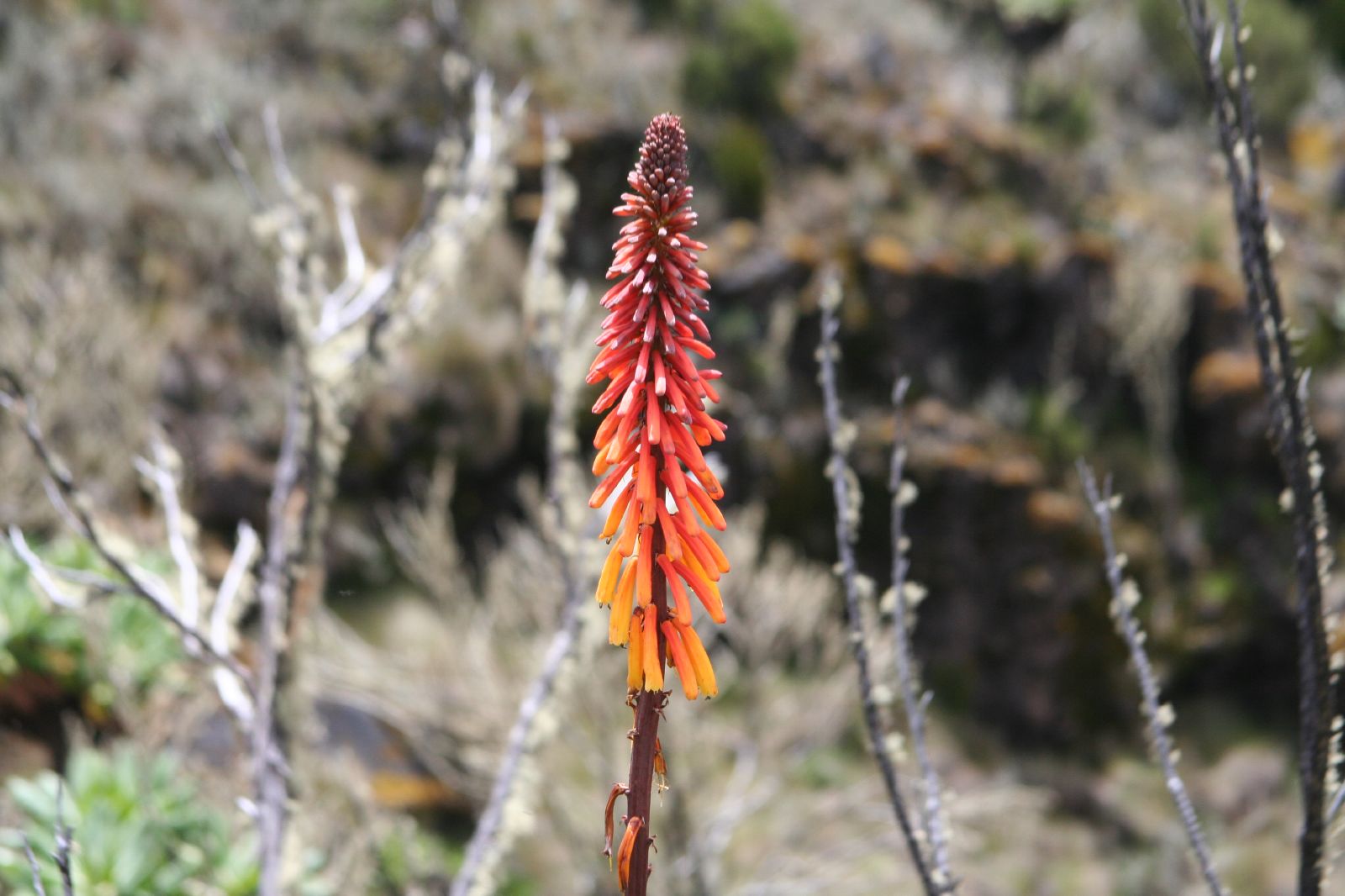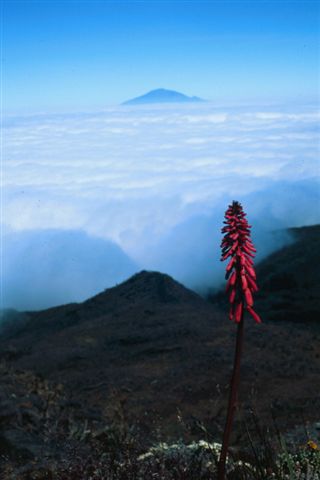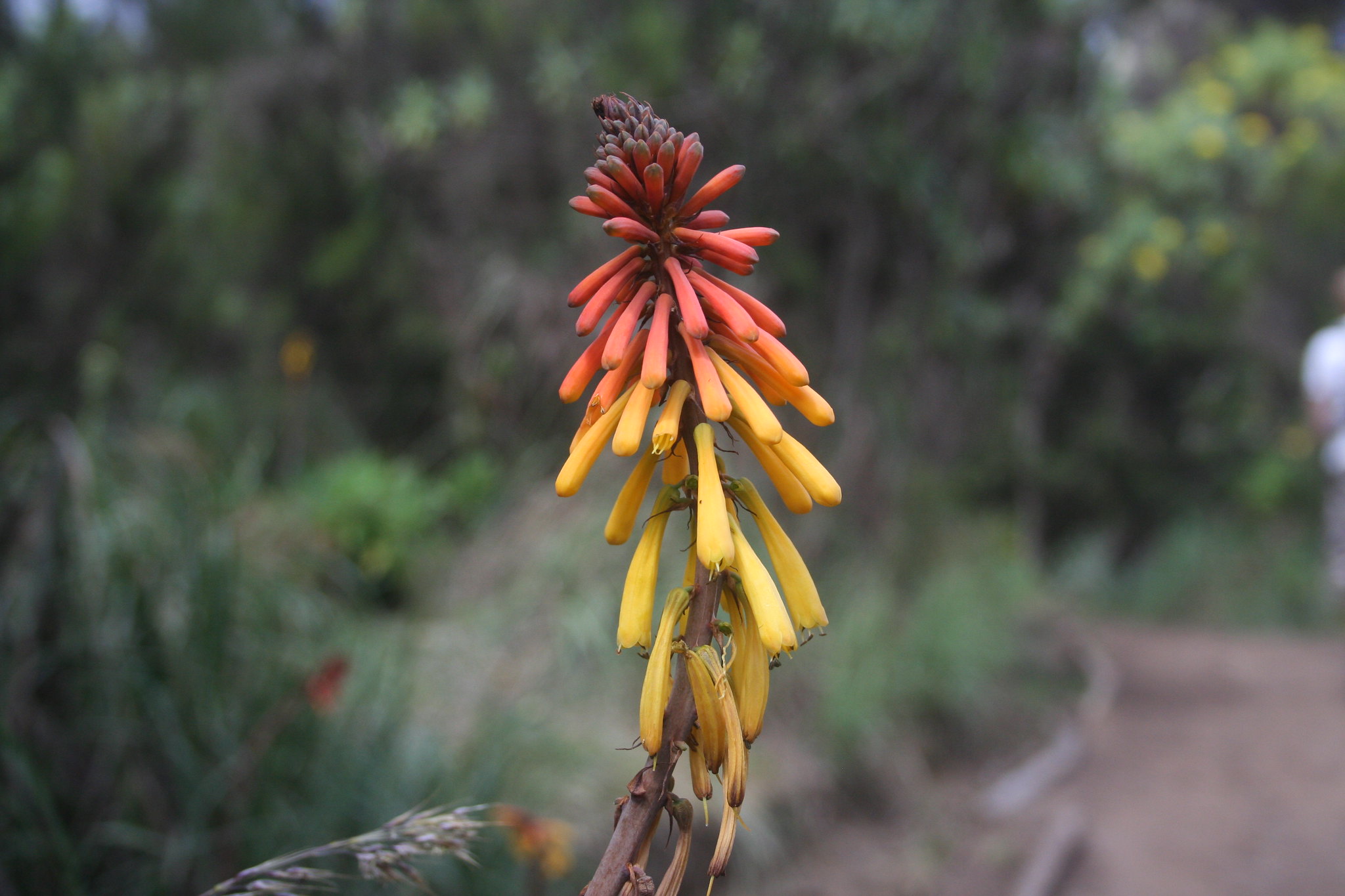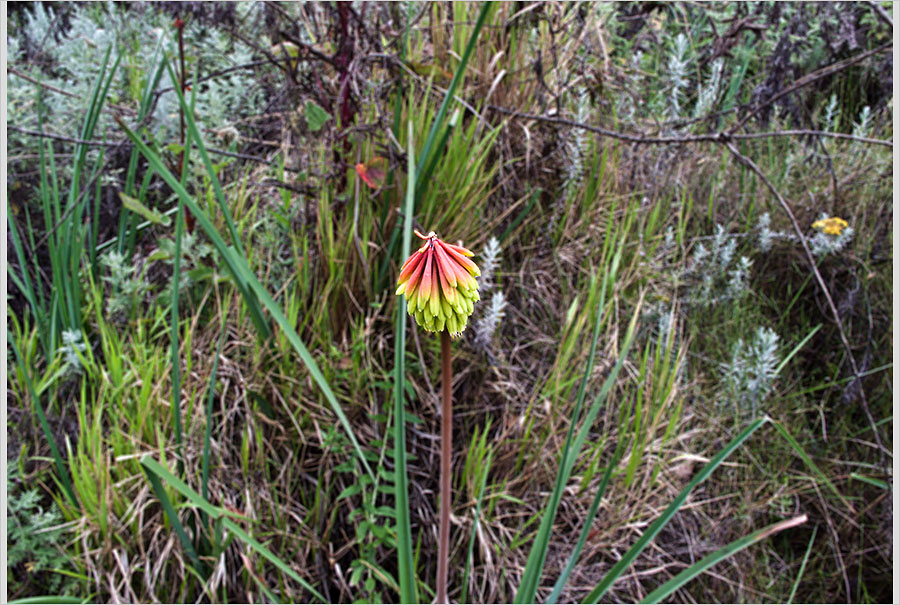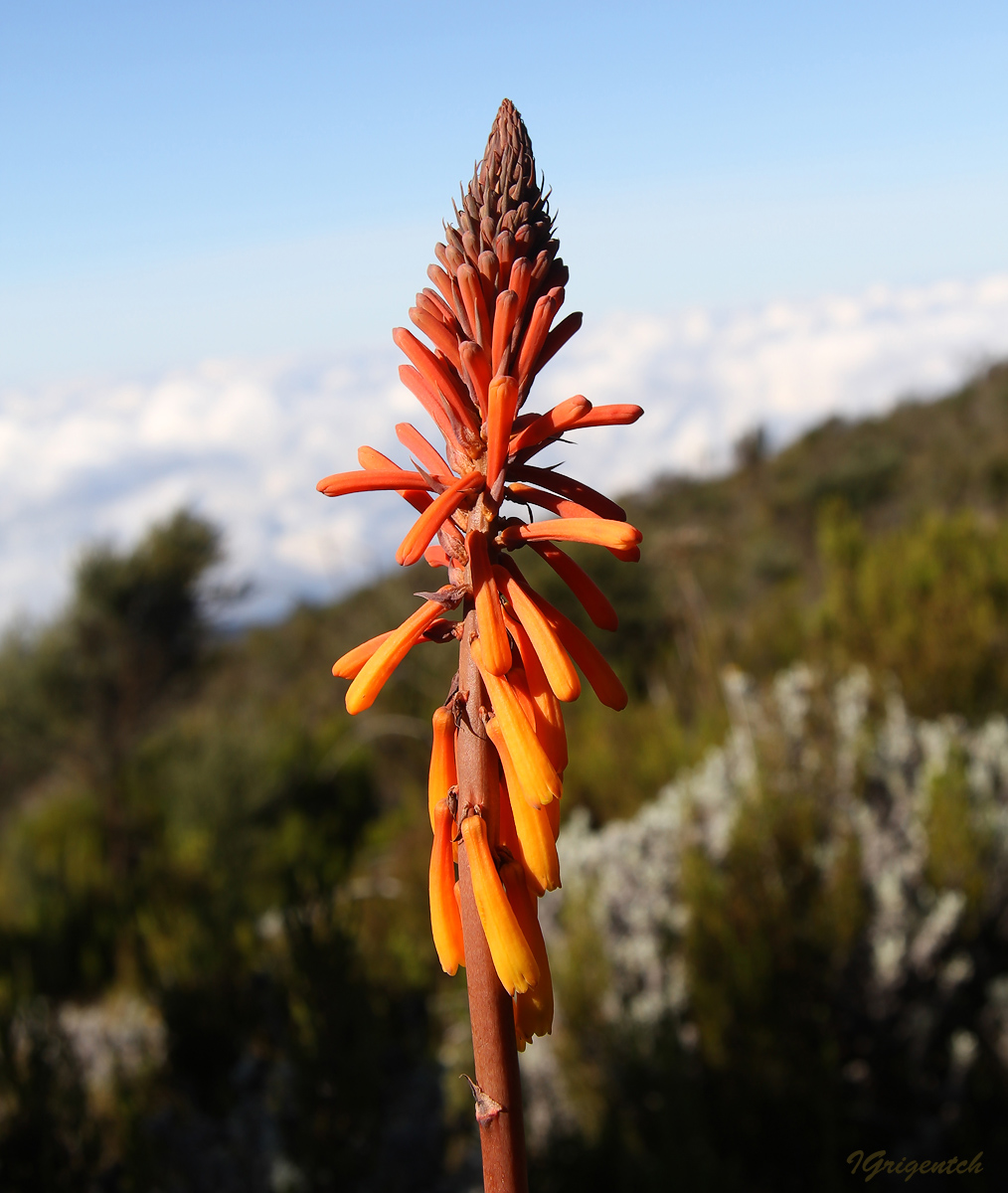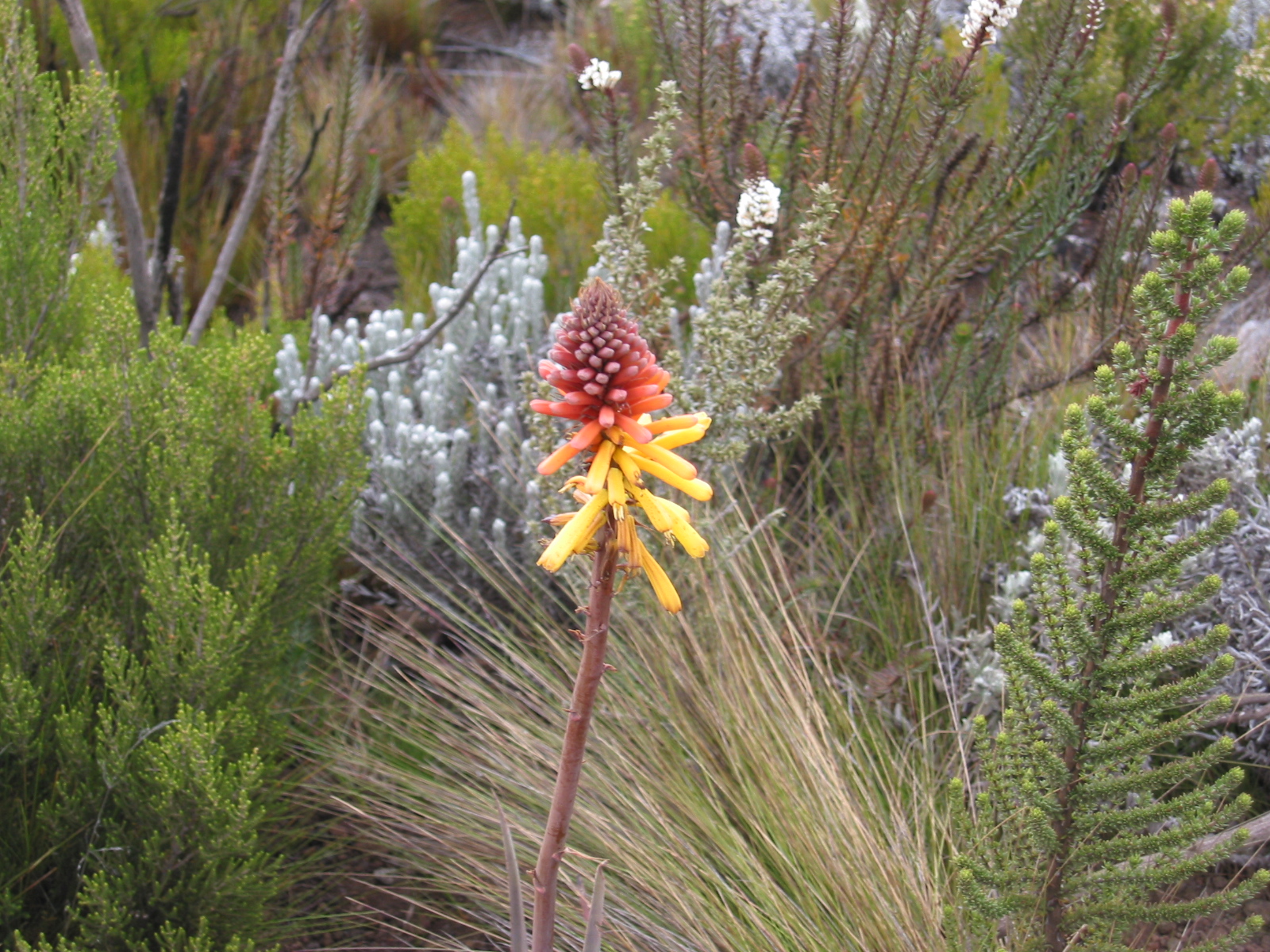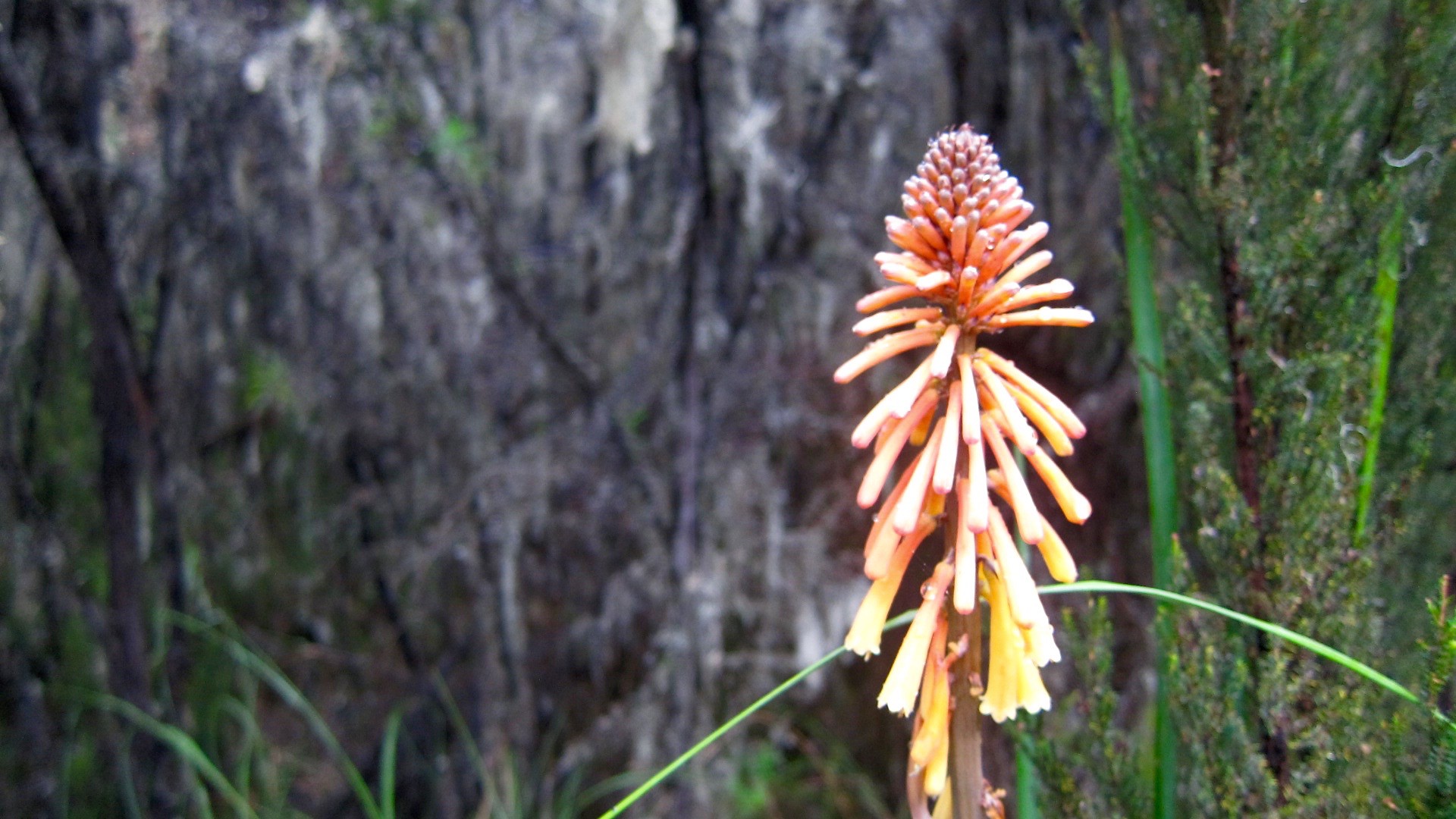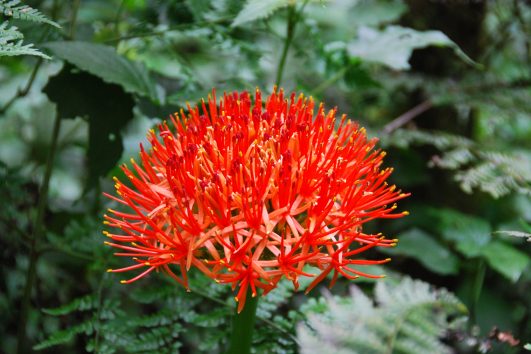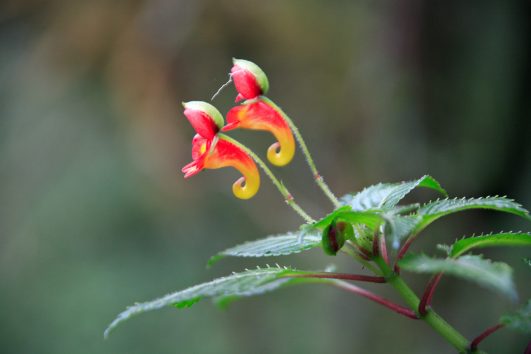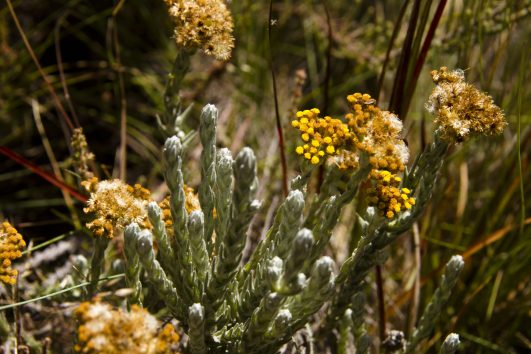Red Hot Poker (Kniphofia thomsonii.) is a popular perennial plant known for its striking, torch-like flower spikes that resemble glowing pokers, hence its common name.
Today, grasses also predominate on the mountain slopes; they are interspersed with some magnificent wildflowers, such as Protea kilimandscharica, which has golden petals. Another favourite, which most climbers will recognize right away, is Kniphofia thomsoni, also popularly known as the red-hot poker in backyard gardens.
High on the slopes of Mount Kilimanjaro, immediately after the rainforest buffer zone, you’ll find a striking plant that adds a splash of vibrant colour to the landscape: the Red Hot Poker (Kniphofia thomsonii.). Known for its brilliant, torch-like flower spikes, this plant is a beacon of fiery reds and oranges in the cooler, high-altitude environments of Kilimanjaro. Its unique appearance and ecological role make it a fascinating subject of study for botanists and nature enthusiasts alike.
Mount Kilimanjaro’s diverse ecological zones create varied habitats for the flora that call it home. The Red Hot Poker thrives primarily in the subalpine and alpine zones of Kilimanjaro, which lie between 2,800 and 4,000 meters (9,200 to 13,100 feet) in elevation. These areas are characterized by cooler temperatures, higher humidity, and less intense sunlight compared to the lower montane zones.
In these high-altitude regions, the Red Hot Poker is often found in open grasslands and rocky slopes where it enjoys full sun exposure and well-drained soil. Despite the challenging conditions, such as strong winds and cooler temperatures, the Red Hot Poker has adapted remarkably well, showcasing its resilience and adaptability.
- Botanical Description:
- Appearance: Red Hot Pokers produce tall, dense spikes of tubular flowers that start off red at the tip and fade to yellow or orange towards the base, giving them a fiery appearance. The foliage is typically long, strap-like, and can be either evergreen or deciduous depending on the species or variety.
- Varieties: There are numerous cultivars and species, ranging in size from compact varieties suitable for borders to taller types that can reach up to 2 meters (6.5 feet) in height.
- Habitat and Distribution:
- Native Range: Kniphofia is native to Africa, particularly South Africa, where it thrives in grasslands, rocky outcrops, and stream banks. Its adaptability has made it popular in gardens worldwide.
- Cultivation: Red Hot Pokers are hardy in USDA zones 5 to 9, making them suitable for a variety of climates, though they prefer well-drained soil and full sun to partial shade.
- Ecological Role:
- Pollination: The tubular flowers are attractive to hummingbirds, bees, and other pollinators in their native habitat and gardens alike. The bright colours and nectar-rich flowers make them particularly appealing.
- Garden Use: They are often used in ornamental gardens for their dramatic vertical accent and late summer to autumn bloom time, which can extend the flowering season.
- Cultural Significance:
- Garden Plant: Red Hot Pokers have become a staple in many gardens due to their vibrant colours and ability to attract wildlife. They are often used in prairie-style plantings or as part of mixed borders.
- Symbolism: While not deeply symbolic in many cultures, their fiery appearance might evoke themes of passion or energy.
- Adaptations:
- Drought Resistance: Many species are quite drought-tolerant once established, thanks to their fleshy roots that store water, an adaptation from their native environments.
- Frost Tolerance: Depending on the species, some can tolerate light frosts, but others require protection in colder climates.
- Care and Propagation:
- Maintenance: They require minimal care once established, though they benefit from division every few years to maintain vigour. Deadheading can encourage further blooming.
- Propagation: Red Hot Pokers can be propagated by seed or division. Seeds need stratification or a period of cold to germinate, while division is best done in spring.
- Challenges:
- Pests and Diseases: Generally resistant, but can occasionally suffer from root rot if soil drainage is poor, or from pests like aphids or slugs.
- Invasiveness: In some regions outside their native range, they can become invasive, particularly in areas with similar climates to their native habitat.
Description of Red Hot Poker
The Red Hot Poker is a visually striking plant that can’t be missed in the Kilimanjaro landscape. Here’s a closer look at its distinctive features:
- Flower Spikes: The most notable characteristic of the Red Hot Poker is its tall, tubular flower spikes, which can reach heights of up to 1.5 meters (5 feet). These spikes are made up of numerous tightly packed, brightly coloured flowers that range from deep red to orange and yellow. The flowers are arranged in a gradient, with the lower portion of the spike typically showing a deeper red and the upper flowers transitioning to a bright yellow. This striking colour combination resembles a glowing torch or poker, hence the plant’s common name.
- Leaves: The Red Hot Poker has long, narrow, and stiff leaves that grow in a rosette pattern at the base of the plant. The leaves are generally green to grey-green and can reach lengths of up to 60 centimetres (24 inches). Their rigid texture helps the plant withstand strong winds and harsh weather conditions found at higher elevations.
- Growth Habit: The plant grows in clumps or clusters, with multiple flowering spikes emerging from a central base. This clumping growth habit allows the Red Hot Poker to create a dramatic visual impact, particularly when several plants are in bloom simultaneously. The robust structure of the plant helps it remain upright and stable in its often windy and exposed high-altitude habitat.
Additional information
| Habitat | Montane Forest Zone |
|---|

